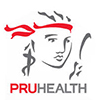Cricket
 Cricket is a sport where you have to be good at many things. If you’re a bowler, you still have to bat well. If you’re a batter you still have to field well. If you are in the balance for selection and you are not as fast, agile or strong as the player in possession then you are going to find it all the harder to get in.
Cricket is a sport where you have to be good at many things. If you’re a bowler, you still have to bat well. If you’re a batter you still have to field well. If you are in the balance for selection and you are not as fast, agile or strong as the player in possession then you are going to find it all the harder to get in.
There are very different physical demands involved in different types of cricket, which has meant the injury profile is slightly different between five day Test Matches, 3 day matches and one day matches.
Low back pain is particularly prevalent among younger fast bowlers. The repetitive action of bowling for long spells places excessive stress on the tissues of the lower back, where stress fractures of the vertebra (Spondylolysis) can develop.
Research has indicated that muscle injuries such as Hamstring Strains and Side Strains are the most common cricket injuries. These injuries are due to the functional demands of the sport where occasional sprinting and ball throwing may be repeated across a seven hour day. We also commonly see shoulder pain and sprained ankles in cricketers.
Bowling
As a bowler you are more likely to get injured. Whatever your body type, you can do with being stronger. This is because bowling speed is improved by putting power from your body into the ball. Power is strength times speed. So, the stronger you get with weights, the faster you get as a bowler.
When you bowl you stretch as much as you can because the greater the stretch the greater the reflex. You can improve this stretch by improving the parts of your body that stretch.
For speed this is your thoracic (or middle) spine and your hips. In fact, it’s the case that the main difference between a “slingy” fast bowler and someone more orthodox is the mobility in the thoracic spine.
It is impossible to be too mobile in this area and our manual therapy techniques and individual exercise programmes will help improve your technique.
The Physiotherapy2fit team of specialists Physiotherapists will:
- Diagnose the injury
- Provide advice on rehabilitation and length of healing
- Promote healing of the injured tissues and to control the inflammation and pain
- Thoroughly rehabilitate the injury restoring full flexibility, strength, balance & proprioception and correcting any muscle imbalances that may have developed
- Provide individual sport specific exercise programmes
- Use sport-specific functional testing and rehabilitation to ensure that you are ready to return to training and competition
- Discuss strategies to reduce recurrence of the injury
If proper management is not undertaken, you may return to playing too soon despite instability, lack of mobility, proprioceptive disturbance and muscle weakness. This will greatly enhance the risk of prolonged pain and re-injury. This ultimately affects your performance for the length of time you are not properly rehabilitated.
For ongoing structured, supervised exercise excellent for becoming ‘cricket-fit’ you could join our Pilates and Fitness Conditioning classes. These are fun small group classes that incorporate small equipment including the BOSU, gym balls and resistance apparatus to challenge balance, tone and build muscle strength without losing flexibility. The maximum class number is 6 so you can be sure to get individual attention throughout ensuring you are performing exercises for the full benefit.
“Do you have a fracture?”
One of the latest technology advances of modern Physiotherapy is the introduction of LIPUS. This new technology is able to reduce your healing time by up to 50%. Thats 3 weeks instead of 6!
The sound pressure stimulation provided by the LIPUS (Low Intensity Pulsed Ultrasound) system accelerates the formation and union of fractured bone and promotes rapid recovery.
Research has shown LIPUS significantly reduces healing time compared to placebos.
Used by all premiership football clubs and the MoD this is cutting edge technology which is only offered as a last resort on the NHS.
Book an appointment today for and initial consultation and then hire our machine for daily use at home.
















